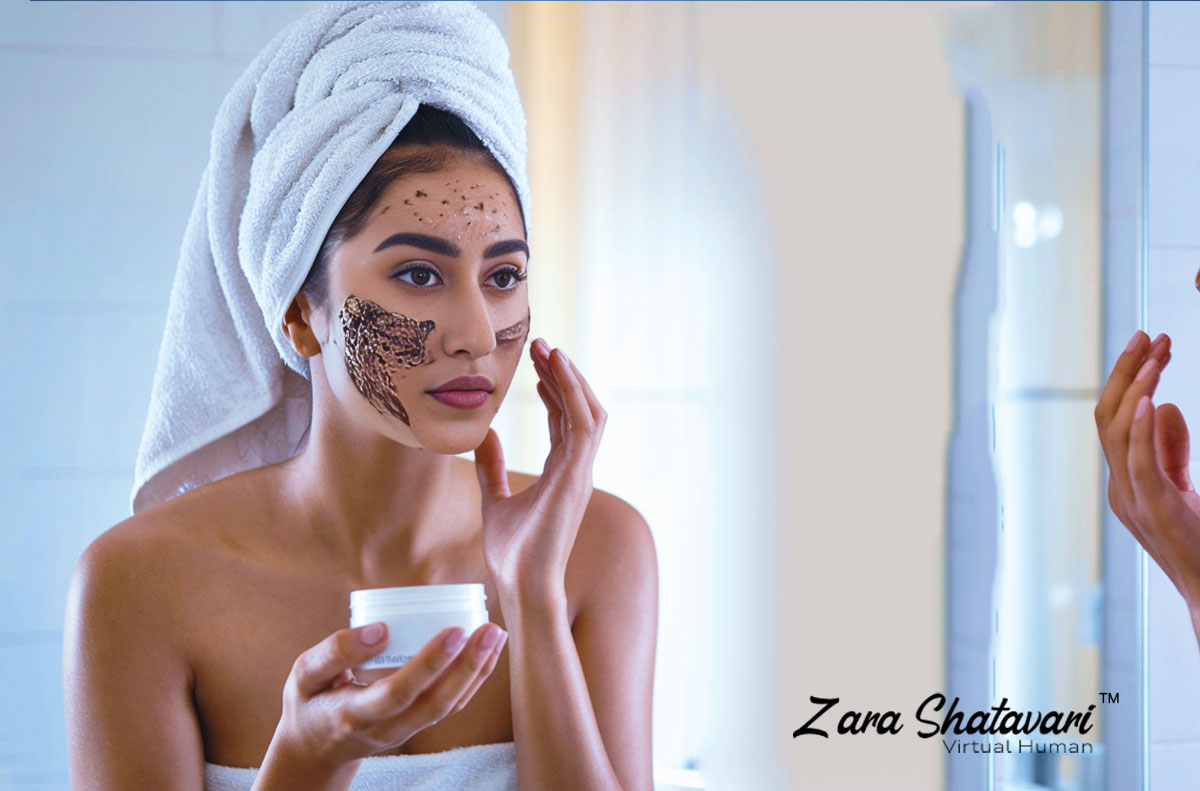Turmeric is a popular ingredient in skincare due to its antibacterial, anti-inflammatory, and brightening properties. But while it offers multiple benefits, applying turmeric on your face can have risks and side effects if not used properly.
Let’s explore the potential risks of using turmeric on your skin and how to apply it safely.
Why Do People Use Turmeric on Their Face?
Turmeric is commonly used in skincare because it:
✅ Brightens skin and reduces pigmentation
✅ Fights acne-causing bacteria
✅ Soothes inflammation and redness
✅ Improves skin texture
But despite these benefits, turmeric can cause skin reactions if not used correctly.
Risks of Applying Turmeric on Face
1. Skin Staining (Yellow Tint) 💛
Turmeric contains curcumin, a natural yellow pigment that can stain your skin.
🚫 Why it happens:
- Applying raw turmeric or leaving it on for too long can cause a stubborn yellow tint.
🌿 How to avoid it:
- Mix turmeric with milk, honey, or yogurt to reduce staining.
- Use Kasturi turmeric (wild turmeric), which doesn’t stain as much.
2. Allergic Reactions & Skin Irritation 🚨
Some people are allergic to turmeric, which can cause redness, itching, or rashes.
🚫 Why it happens:
- Turmeric has strong bioactive compounds that may irritate sensitive skin.
🌿 How to avoid it:
- Do a patch test first—apply a small amount on your wrist and wait 24 hours.
- Dilute turmeric with aloe vera or coconut oil before applying it to your face.
3. Excessive Dryness or Oiliness
Turmeric can affect your skin’s natural moisture balance, leading to dryness or excess oil production.
🚫 Why it happens:
- Turmeric can strip natural oils in dry skin.
- It may trigger oil glands in oily skin, leading to breakouts.
🌿 How to avoid it:
- If you have dry skin, mix turmeric with honey or yogurt for added hydration.
- If you have oily skin, combine turmeric with rose water or multani mitti.
4. Increased Sun Sensitivity ☀️
Turmeric can make your skin more sensitive to sunlight, leading to a higher risk of sunburn and pigmentation.
🚫 Why it happens:
- The compounds in turmeric can weaken your skin’s natural barrier.
🌿 How to avoid it:
- Always apply sunscreen (SPF 30 or higher) after using turmeric masks.
- Avoid going into direct sunlight immediately after application.
5. Worsening of Acne or Breakouts 🔴
Turmeric may clog pores or trigger acne in some people, especially if mixed with oily ingredients like coconut oil.
🚫 Why it happens:
- It can trap dirt and bacteria if not washed off properly.
🌿 How to avoid it:
- Use light ingredients like aloe vera or lemon juice if you have acne-prone skin.
- Wash off the mask completely with lukewarm water.
How to Use Turmeric Safely on Your Face
✅ Always do a patch test before first use.
✅ Mix turmeric with skin-friendly ingredients (milk, honey, or yogurt).
✅ Don’t leave turmeric masks on for more than 10–15 minutes.
✅ Use Kasturi turmeric if you want to avoid staining.
✅ Apply moisturizer after rinsing off the mask.
✅ Use turmeric masks only 1–2 times a week to prevent irritation.
FAQs About Applying Turmeric on Skin
Q1: Can turmeric permanently stain my skin?
A: No, turmeric stains are temporary and usually fade after a few washes. Use milk or lemon juice to remove yellow stains faster.
Q2: Is turmeric safe for all skin types?
A: Not always! While turmeric suits most skin types, it can cause redness, irritation, or dryness in sensitive skin. Always do a patch test first.
Q3: How often should I use turmeric on my face?
A: 1–2 times a week is enough. Overuse can dry out your skin or cause reactions.
Final Thoughts
While turmeric has incredible skincare benefits, it’s important to use it cautiously to avoid irritation, staining, and breakouts. By following the right application methods, you can enjoy glowing, healthy skin without unwanted side effects!
🌿 Have you experienced any turmeric-related skin issues? Share your experience in the comments! 😊











